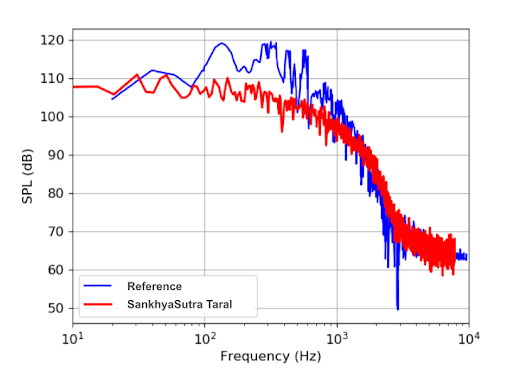Aeroacoustics Simulation of Automobiles
Consideration of flow noise is critical in the development cycle of an automobile. This noise is generated due to the complex flow patterns around the automobile. To accurately capture the aeroacoustics, it is important to resolve the flow profile accurately. Traditional RANS based CFD simulation platforms face challenges to provide the accuracy needed to obtain acoustic sources and wave propagation.
SankhyaSutra Taral, based on the Entropic Lattice Boltzmann Method, can seamlessly predict complex flow patterns. The solver makes use of structured multi-resolution grid arrangement, where an efficient Body Centered Cubic arrangement of grid points is used for spatial discretization. One of the advantages of SankhyaSutra Taral is that the use of explicit turbulence models is not necessary. This enables the user to simulate different flow scenarios without prior knowledge of turbulence models in the domain.
In this study, we consider the acoustic analysis of an automobile. Ahmed body design by S R Ahmed in 1984, is a simple geometry capable of replicating the complex flow structures involved in the flow past an automobile.
We consider an Ahmed Body with a slant angle of 250. A Mach number of 0.1 and Reynolds number of the order of 4 million is considered for the simulation. To capture the Sound Pressure Level (SPL), a probe is placed downstream in the wake of the body at location (0.391, 0.060, 0.115), as shown in Figure 1.

Figure 2 shows the contour plots of the mean velocity flow field in the symmetric plane of the Ahmed Body. Separation bubbles at the forebody and on the slant surface can be observed demonstrating the solver’s capability to capture flow separation and reattachment.

SPL shown in Figure 3 is computed using a Hanning window, where the initial transients are ignored (Ref.: Duncan, Bradley D., et al.). From the plot, it can be noted that we can accurately capture the SPL at higher frequencies which are in good agreement with the reference values. It was determined in this study that match for the lower frequencies was also possible with longer simulation runs. In summary, SankhyaSutra Taral was not only able to successfully capture the flow profile around the Ahmed Body but capture near field acoustics as well.
